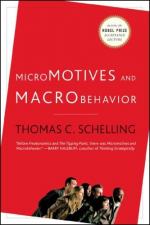|
This section contains 531 words (approx. 2 pages at 400 words per page) |

|
Chapter 5: Sorting and Mixing: Age and Income Summary and Analysis
There are idealized models of segregation and integration. The importance of these models lays in their ability to identify an important social phenomenon and secondly in results that have gravitas. Of course models consider variables. Discrete variables are social issues such as sex, race and religion. Continuous variables are things such as age, income and IQ. In addition to population concerns, the model is designed to identify activity. There are also constraining mathematical identities that cannot be ignored. For example, the youngest 10 percent move out of an apartment building because they do not want to live with older people. The remaining population of the apartment, however, now has a new "youngest 10 percent." The average age of the youngest 10 percent may have changed but what does not change is that...
(read more from the Chapter 5: Sorting and Mixing: Age and Income Summary)
|
This section contains 531 words (approx. 2 pages at 400 words per page) |

|




